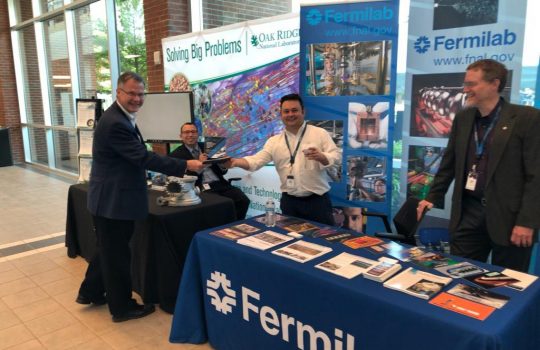Engineering the world’s largest digital camera
In a brightly lit clean room at SLAC National Accelerator Laboratory, engineers are building a car-sized digital camera for the Large Synoptic Survey Telescope. When it’s ready, LSST will image almost all of the sky visible from its vantage point on a Chilean mountain, Cerro Pachón, every few nights for a decade to make an astronomical movie of unprecedented proportions. Building the LSST means solving extraordinary technological challenges.


